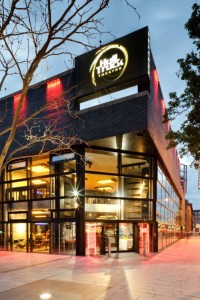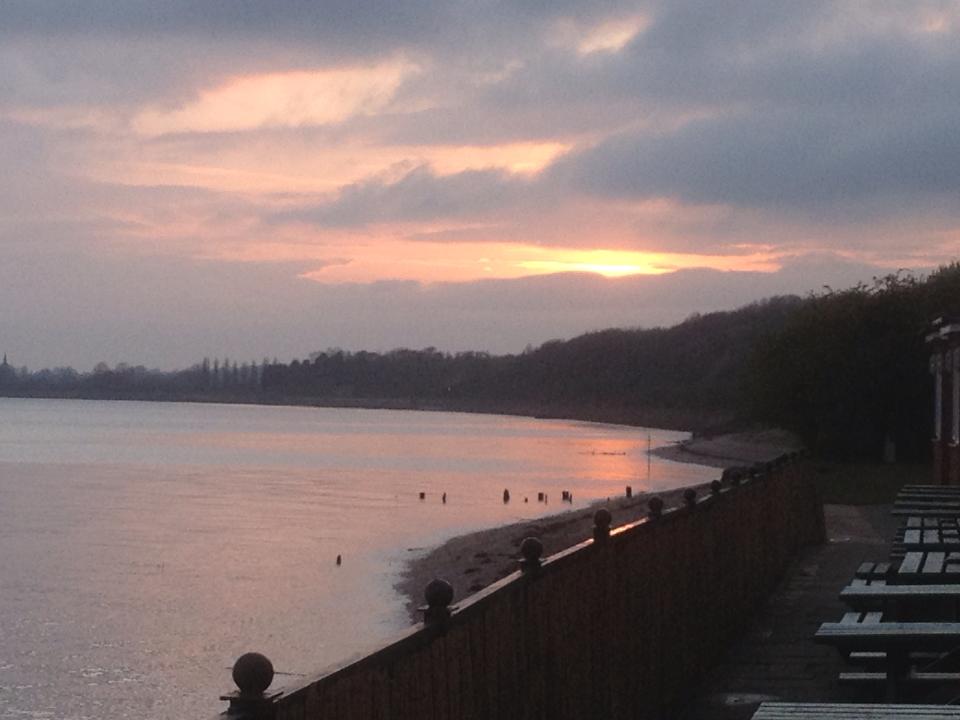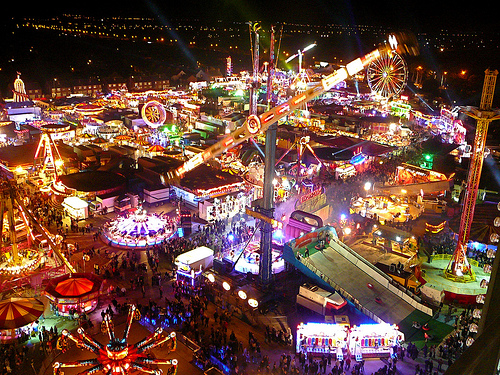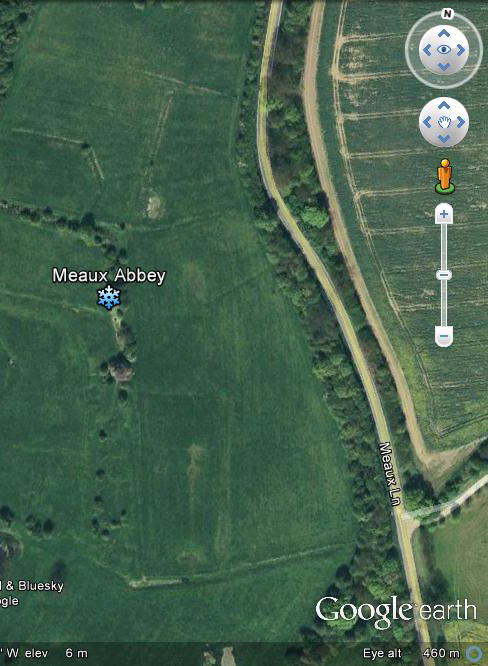Kingston Upon Hull
Picture credit: Nige Hatch Mph photography (IFY community)
“Hull has its own sudden elegancies. People are slow to leave it, quick to return.”
– poet, Phillip Larkin
Kingston Upon Hull is located in East Yorkshire which was originally the East Riding of Yorkshire. The city’s port is located on the north bank of the Humber Estuary and at the mouth of The River Hull.
Page Contents:
- Port of Hull
- Hull Dialect
- Places to Visit in Hull
- Transportation in Hull
- Travelling In & Out of Hull
- Re-developments in Hull
- Theatres in Hull
- Hull & British Culture
- Hull Nightlife
- Winners of the UK Capital of Culture
- Sport in Hull
- Education in Hull
- History of Hull
- Hull Gallery
- Hull Trivia
Port of Hull
In 2011, it’s population was recorded at 256,000 people. Hull is currently known for its fishing and trading past, the Humber Bridge, and for its success of becoming the UK city of culture in 2017.
Nowadays, it’s still a busy port which employs roughly 18,000 people and handles 13m tonnes of cargo. Since the 1970’s, this has declined considerably. Many of the city’s industrial heartland is either derelict or has been redeveloped into leisure parks and commercial developments.
Hull Dialect
Kingston Upon Hull, often shortened to Hull, is a place with its own distinctive character. Its residents are known as Hullensians and their accents differ from the rest of Yorkshire. When speaking, Hullensians typically pronounce the letter ‘o’ as an ‘e’ sound, for example, ‘work’ becomes ‘werk’.
Another characteristic which is most prominent in Hull is the dropping of the ‘H’ sound at the beginning of words. For example, when Hullensians talk about their native city, they say “Ull” instead of “Hull”.

Places to Visit in Hull
Hull has many landmarks and tourist attractions. Each one reflects its maritime history and adds to the uniqueness of the city.
Located in the city centre is Queens Gardens which covers 7 acres. It was built on an old dock that is home to several fountains and a statue of William Wilberforce who was an MP.
In the early 19th Century, Wilberforce helped abolish slave trade. He also has a museum dedicated to his work called Wilberforce House. This can be found on the high street of the old town.
Since opening its doors in 2002, The Deep has become one of the most successful attractions in the city. It’s a public aquarium that has roughly 450,000 visitors each year. In 2013, The Deep was voted the best family place to visit in Hull.
In 1927, Ferens Art Gallery opened. It features many works associated with the city and its maritime history.
Hull boasts a number of attractive city parks. These are West Park, East Park, and Pearson Park.
West Park is home to Hull Fair which is the largest fairground in the UK. Since 1888, it arrives every October and is situated on land nearby Walton Street.
East Park was opened to celebrate Queen Victoria’s Golden Jubilee and is home to a boating lake and aviaries. In 2008, the park was upgraded and now includes a splash boat, walk through aviary, and a maze.
In 1862 Pearson Park opened which was Hull’s first city park. It was created in response to the requirement of green spaces in Victorian cities for the working population.

Transportation in Hull
Hull’s location has had a profound impact on its transportation. It’s remoteness from any other major city and proximity to the sea has both had major advantages and disadvantages.
The most significant development for Hull’s transportation was the creation of the Humber Bridge. Opened in 1981, the Humber Bridge crosses the estuary and, at the time, was the largest single span suspension bridge in the world.
This suspension bridge replaced the old ferry service to Lincolnshire. It has also increased access to the county without having to travel several miles inland to Goole.
Travelling In & Out of Hull
In the 70’s, the M62 motorway was being built. This was linked to the pre-existing A63 into the city and improved road links between Hull and the rest of Yorkshire.
Kingston Upon Hull is a principal train stop along the East Coast Main Line. Originally built in the mid 19th Century, the city’s old Paragon street station was drastically upgraded and later reopened in 2007 along with the new bus station.
North Sea Ferries are a popular way of visiting the continent. It’s main focus is the Netherlands where the Dutch dash has become a favourite trip for locals. The Pride of Hull and the Pride of Rotterdam regularly set sail from the city’s £14m terminal located on the King George dock.
Kingston Upon Hull is the only city in the entire country to have its own local telephone services. This is called Kingston Communications and is customised by its own cream phone boxes.

Re-developments in Hull
The re-development of the city centre and the decline of the dock has created opportunities for the retail and leisure sector. There have been two major shopping malls, Princes Quay and St Stephen’s shopping centre, built in the past twenty five years.
In 1991, Princes Quay opened its doors. This shopping centre was built on the site of the old Prince’s dock hence the name.
The second shopping mall, St Stephen’s shopping centre, opened in 2007 and was built on the site of the old bus station. In total it cost a staggering £220m to build and is renowned for its environmental policy. 100% of the shopping centre’s waste is recycled.
Outside of the city centre, other redevelopments started to pop up along the side of the estuary. One of these included St Andrews Quay. It was built in the 1980’s on a filled in dock which had the same name.
Hull Marina was also developed in the same decade as St Andrews Quay. It was built on a railway dock with 270 berths. It currently hosts the annual sea shanty festival and is home to the Spurn lightship museum.
Theatres in Hull
The city is home to two theatres. These are Hull “New” Theatre and Hull Truck Theatre.
Hull “New” Theatre opened in 1939 and shows traditional plays, ballet, children’s plays, and musicals. Hull Truck Theatre opened in 1971 and in recent times has been relocated to the St Stephen’s complex.

Hull & British Culture
Kingston Upon Hull has contributed to British culture. Philip Larkin, a famous poet born in Coventry, moved to Hull to spend his later years in the city which influenced his work. Through the 1980’s and 1990’s, local singer Paul Heaton topped the charts with bands The Housemartins and The Beautiful South.
Hull Nightlife
The nightlife in Hull is varied. There are plenty of different venues, bars, and clubs for people to enjoy that each offer something different.
One of the city’s most prominent live venue is The Adelphi. It’s hosted bands such as Oasis, Radiohead, and The Stone Roses in the past and continues to host local up and coming bands.
Hull has many nightspots but it’s most famous is Lexington Avenue, also known as La’s. It opened in 1961 as the Locarno ballroom and remained one of the top clubs in the city until its closure in August 2005 due to financial difficulties. Four years later the building was demolished.
Spiders nightclub is also a highly renowned venue. It’s known for its alternative rock music.
Winners of the UK Capital of Culture
In November 2013, it was announced that Hull had won its bid to win the UK Capital of Culture for 2017. The city won the competition out of eleven other cities across the country.
During the same year, Kingston Upon Hull hosted an estimated 1,500 cultural events. It generated a massive boost to the local economy and improved its reputation.
Sport in Hull
Sport plays a major part in the city through it’s two Rugby League clubs, Hull FC and Hull Kingston Rovers. These two teams make up one of the biggest rivalries in the code and divide the city into East and West.
Hull’s football team, Hull City FC, have been overshadowed for many years. More recently, they have received larger investment which led them to move to KC Stadium which the team shares with Hull FC.
In May 2014, Hull City played in their first ever FA Cup final. They were competing against Arsenal and eventually lost 3-2 after extra time.

Education in Hull
This city has one traditional university called University of Hull. It was founded in 1927 and was given a Royal charter in 1952.
Hull Uni, as it’s also known as, typically has a student population ranging from 16,000 – 20,000 which once included former alumni John Prescott and Philip Larkin. It’s campus is mainly based in the north of the city but it also has an outpost in Scarborough.
In 2013, Humberside University closed with all courses transferred to its sister institution Lincoln. The Hull York medical college is a joint venture between the two city’s universities in order to train more doctors.
Kingston Upon Hull is a city full of unique character, people, scenery, and culture. There are lots of interesting landmarks and tourist attractions to visit.
History of Hull
Hull was created by the monks who lived at nearby Meaux Abbey. They used the area as a place to export their wool in the late 12th Century.
Originally, it was a town called Wyke on Hull but was later renamed Kingstown on Hull by Edward I in 1299. He used Hull as a base for his war with Scotland.
It quickly became an important fishing, whaling, and trading hub throughout the medieval times. Soon after it also established trading links with the rest of the world.
During the Civil War, the city supported the Parliamentarians. They famously denied access to King Charles I who besieged the town. This then helped to spark open conflict between the two sides.
Up until the early 20th Century, Hull became wealthy due to fishing and whaling being an important part of its economy. By this point, in 1897 it was granted city status and its docks were busier than ever with trade.

During the Second World War, Hull was the most bombed city outside of London. This was due to its strategic importance and proximity to mainland Europe.
In total 95% of the city’s buildings were damaged along with 1,200 casualties. After the war had ended, most of the city centre had to be rebuilt.
Throughout most of its history, Hull was a very wealthy and successful city in Yorkshire. However, this began to decline at the end of the 20th Century partly due to the settlement made with Iceland to resolve the Third Cold War.
The settlement gave the Scandinavians a 200 nautical mile exclusion zone. It resulted in restrictions being imposed on the British fishing fleets.
This rule severely affected the fishing industry in Hull and other Northern sea ports. Many fishermen ended up losing their jobs as a result.
The invention of shipping containers and a general decline in UK manufacturing during the 70’s and 80’s deeply affected Hull. It created a rise in unemployment and redevelopment of its industrial heartlands.
Hull Gallery









Hull Trivia
In 1642, Hull denied Charles I entry to the town. It caused the Siege of Hull by The Royalist army which was the first major action of the Civil War. The decision to deny entry was made in Ye Olde White Harte Pub located on Silver Street which is now known as the Plotting Parlour.
The infamous ship The Bounty was built in Hull in 1784. Firstly named Bethia, it was employed as a Merchantman. In 1787 the Admiralty bought Bethia and re-named it The Bounty. Captain William Bligh was cast adrift by his mutinous crew in 1789.
In July 1903, famous aviator Amy Johnson was born in Hull. She was the first female aviator to fly alone from Britain to Australia. Unfortunately she died in 1941 when her plane crashed into the Thames Estuary.
The fictional castaway Robinson Crusoe, made famous by Daniel Defoe, set sail from Hull’s Queens dock in 1651.
The Land of Green Ginger is located in Hull at the bottom of Whitefriargate in the Old Town. There are many inconclusive theories around how it got its name. The most popular being that it earned its name from a family of Dutch immigrants known as Lindegreens who lived there in the 19th Century.
Hull has one football club and two Rugby League Clubs. These are Hull City AFC, Hull Kingston Rovers, and Hull FC.
Hull is also famous for its Pigeon Fanciers who race pigeons.
People from Hull are called “Hullensians”.
Famous people from Hull include William Wilberforce, Amy Johnson, Sir Tom Courtenay, Ian Carmichael, John Alderton, and Maureen Lipman.

